Wide Area Demonstration
The Analysis for Coastal Operational Resiliency (AnCOR) program is an interagency collaboration between the Environmental Protection Agency (EPA), Department of Homeland Security, and the United States Coast Guard (USCG). The purpose of this program is to prepare the United States to respond and mitigate a wide-area release of a biological agent affecting USCG facilities and assets. In May 2022, a field-scale remediation of outdoor areas contaminated with a Bacillus anthracis surrogate was conducted as part of the AnCOR program. This wide area demonstration (WAD) exhibited capabilities and aided in the development of strategic guidelines.
On this page:
- Test Bed
- Personnel Training
- Background Sampling
- Inoculation of Test Bed
- Pre-decontamination Characterization Sampling
- Decontamination
- Post-decontamination Sampling
- Waste Treatment
- Sample Analysis
- Data Management
- Project Leads
Test Bed
The WAD included the remediation of an outdoor environment test bed that was contaminated with the non-pathogenic surrogate, Bacillus atrophaeus var. globigii (Bg). The test bed consisted of a five-story unoccupied apartment building and the surrounding area (Figure 1), which included surfaces that are commonly found in an urban area: cinder block, concrete, glass, metal, asphalt, gravel, grass, ground litter, and leaves.
Background sampling was conducted to establish any presence of the contaminant on surfaces prior to inoculation (i.e., contamination of the site Bg). Inoculation of the site occurred in select areas of the building exterior, ground surfaces, shrubs, and trees. The demonstration included a sequence of activities: pre-decontamination characterization sampling, decontamination, and post-decontamination sampling. Each activity required one to two days for completion. Waste treatment of select waste items was conducted near the end of the WAD. Waste management was conducted during the field study, and elements of data management were entwined throughout the field study.
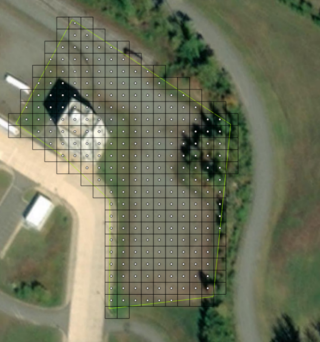
Personnel Training
All sampling team members from EPA and USCG were trained in sampling procedures prior to the sampling events (Figure 2). This helped ensure sampling data used to evaluate decontamination technology performance met quality assurance requirements. The training was developed and conducted to maximize compliance with sampling protocols by sampling personnel.
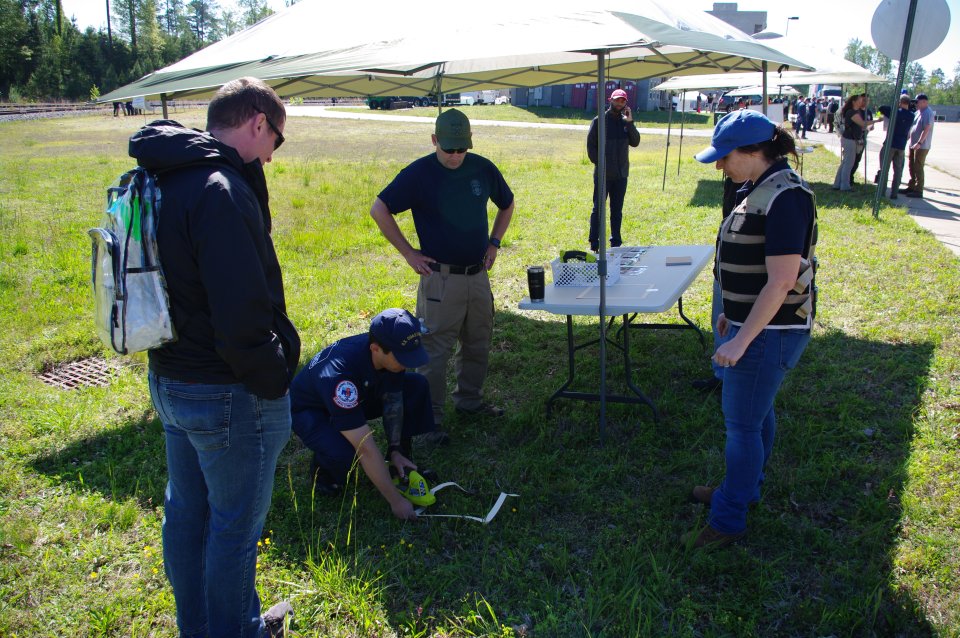
Background Sampling
A round of background sampling was conducted to evaluate the presence of Bg within the test bed prior to inoculation of the pre-selected areas. Background sampling relied on the use of standard sampling techniques, including sponge-sticks, 37-mm vacuum filter cassettes, and grab samples for gravel, grass, and leaves. Some Bg was detected during background sampling, however, the levels did not significantly impact the study outcomes.
Inoculation of Test Bed
The inoculation of select areas on the exterior of the building, near the building and a section of vegetation that included shrubs and trees was conducted using prepared solutions containing Bg. The Bg concentration was established so that a metered spray application led to an intended 107 colony forming units (CFU) per square feet of surface (as shown in Figure 3). A backpack sprayer was utilized to inoculate areas that were not accessible with a boom sprayer, such as the exterior walls of the building.
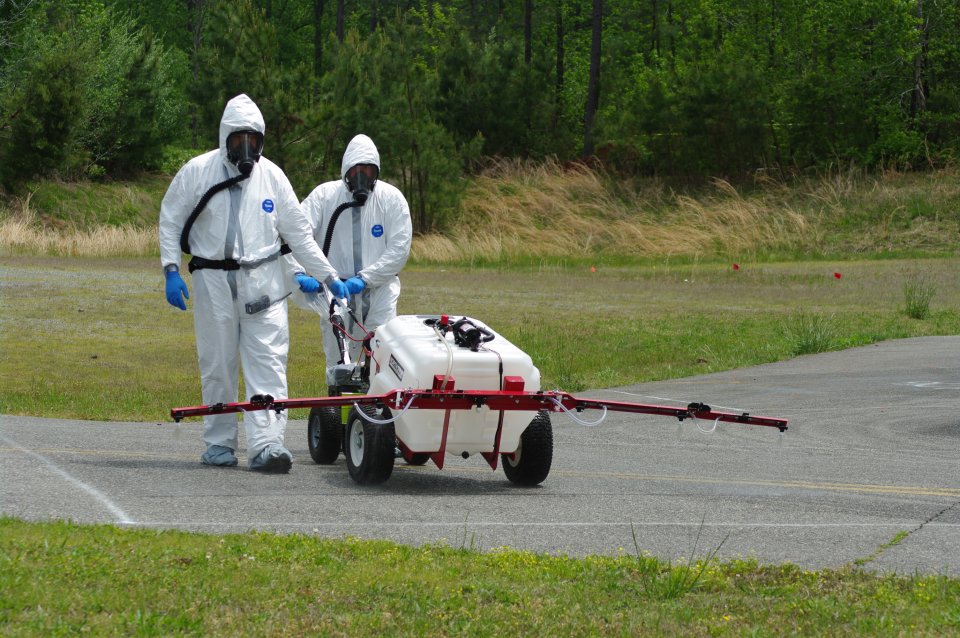
Pre-decontamination Characterization Sampling
Shortly after inoculation of the test bed areas, the level of contamination was characterized using reference material coupons (deployed onto selected surfaces prior to inoculation). Standard sampling methods (grab samples, sponge-sticks, and 37-mm vacuum filter cassettes) were collected the day after the inoculation. Dry filter unit (DFU) air samplers were used around the perimeter of the test bed to measure any reaerosolization of Bg during the demonstration.
In addition to these sampling techniques, an innovative sampling system developed by EPA was tested. The Activity-based Aggressive-air Contained Sampling System (AACeSS) is a mobile system that works by resuspending surface particles and collecting a sample on polyester filters (Figure 4). This system can collect a composite sample over a 400 square-foot area or larger, which is significantly larger than that of a standard sample (approximately one square foot).
More than 200 standard samples were collected during this phase of the remediation, providing a detailed picture on the level of contamination which was in the 106 CFU/ft2 range for most of the contaminated areas which agreed with the targeted 107 CFU/ft2 considering the approximately 10% collection and analysis efficiency for these type of samples.
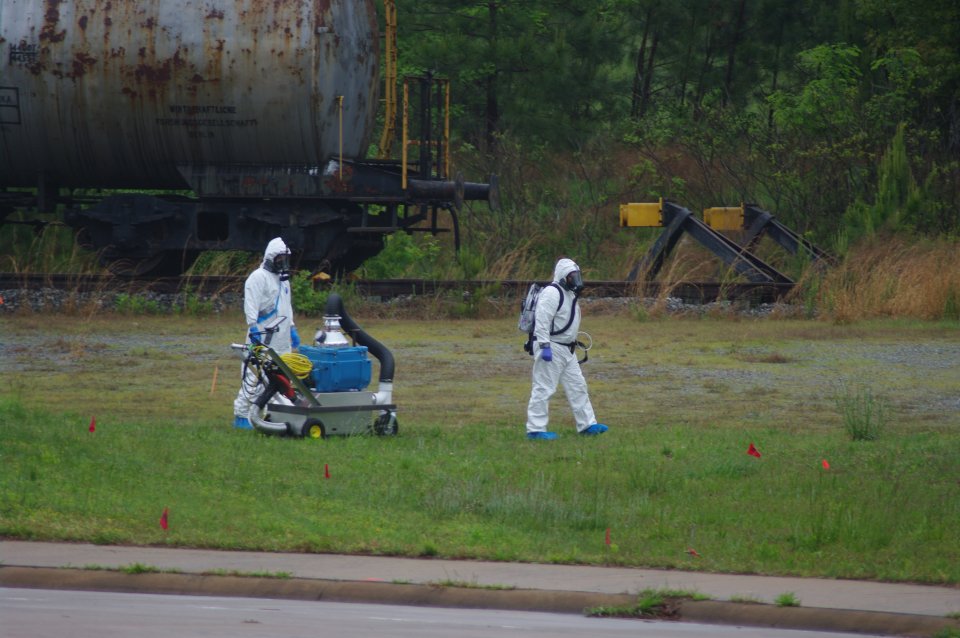
Decontamination
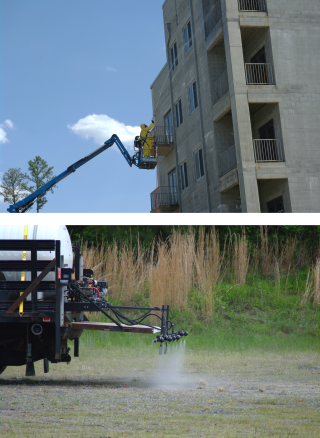
Decontamination approaches were derived from bench- and pilot-scale research that was conducted under the AnCOR program. Following inoculation and characterization sampling, spray-based decontamination operations were conducted using two chemicals, depending on the surface type. A high-test hypochlorite (HTH) solution (free available chlorine concentration of 25,000 parts per million) was applied to asphalt streets, concrete sidewalks, building exterior, and gravel groundcover areas. A formulation containing 0.5% peroxyacetic acid (PAA) was applied on the vegetated areas such as trees, grass, and shrubs (based on previous research results).
For both decontaminants, the targeted application rate was 32 gallons per 1,000 ft2 (doubling the rate used in laboratory bench-scale tests and past field-scale demonstrations). The decontaminants were applied using a spray gun for vertical surfaces and trees with support by a boom lift (Figure 5) to reach the higher walls of the building. A boom sprayer connected to a 500-gallon tank on a flatbed truck was used for horizontal surfaces (Figure 5). It took an average of five people approximately 12 hours (spread over two days) to decontaminate the 2.2-acre site, including the exterior of the five-story building.
The application of HTH did not result in any damage to the building surfaces although a salt residue was visible. Following the post-decontamination sampling, this residue was removed by rinsing the building with diluted vinegar. The HTH applied to the gravel area killed the weeds that were in this area. The PAA application to vegetation did not have any adverse impacts to the trees; however, the grassy areas quickly became dormant following application of the PAA. These areas recovered a few months later after receiving adequate precipitation.
Post-decontamination Sampling
The level of contamination following decontamination was determined using the same sampling methods as in the pre-decontamination sampling event. Of the 199 post-decontamination samples collected using the standard sampling methods, 72 were nondetect and four samples were positive for Bg. Eighty-nine of the post-decontamination samples were indeterminate with large amounts of background organisms (bacteria, mold, yeasts, etc.) present. Most of these samples were associated with gravel, ground litter, grass, and leaf samples. The large number of indeterminate samples demonstrates the need for a method to reduce background organisms during analysis, especially when low levels of spores are expected to be recovered.
Waste Treatment
The waste treatment goal was to demonstrate the decontamination of contents commonly found in USCG facilities. A roll-off container was filled with semipermeable waste bags, containing various porous and nonporous materials contaminated with Bg (Figure 6). The overall objective was to demonstrate successful on-site treatment that would allow waste to be declared a conventional "solid waste" rather than a DOT Category A Infectious Agent waste, while being protective of worker safety. This would greatly simplify subsequent waste management activities. A total of 24 waste bags were sealed and placed inside a 20-cubic yard roll-off container. Following encapsulation, the roll-off container and contents were treated with gaseous chlorine dioxide. Treatment of the waste was mostly effective, with only three of the 33 samples testing positive for Bg. Additionally, five post-fumigation samples were indeterminate due to non-target contamination.
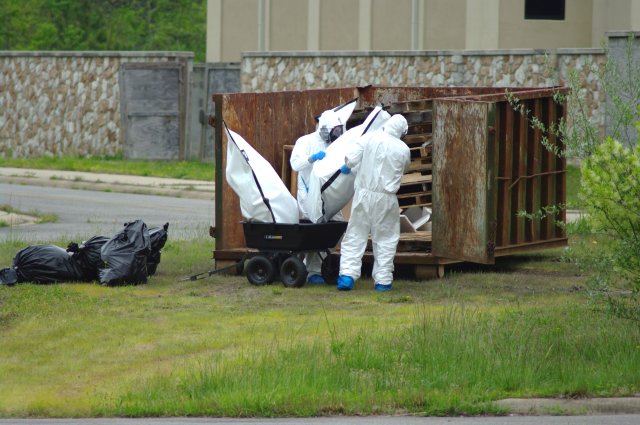
Sample Analysis
Analysis of samples during a wide-area contamination incidents will likely require samples to be analyzed by many different laboratories in order to handle the expected sample load. During the WAD, one aspect of the demo included coordination of several laboratories to analyze the samples that were collected and included EPA's Research Triangle Park Microbiology laboratory, laboratories within the Centers for Disease Control and Prevention (CDC), and several Laboratory Response Network (LRN) member laboratories. CDC participants included laboratories within the Division of Scientific Resources, the Division of Preparedness and Emerging Infections, the Division of High Consequence Pathogens and Pathology. LRN participation included the University of Iowa State Hygienic Laboratory, the Florida Bureau of Public Health Laboratories, the Virginia Division of Consolidated Laboratory Services, and the New York State Department of Health Wadsworth Center. The WAD provided an opportunity to improve partnerships among these laboratories.
Data Management
Novel techniques and strategies for data management were used during the WAD, including detailing roles, processes, and technologies for data acquisition, data management for sample collection, and visualization of results. The WAD also provided a realistic venue for evaluation of innovative data management approaches and equipment (Figure 7). The goal was to streamline data management at an incident, from field-collection through analysis and reporting.
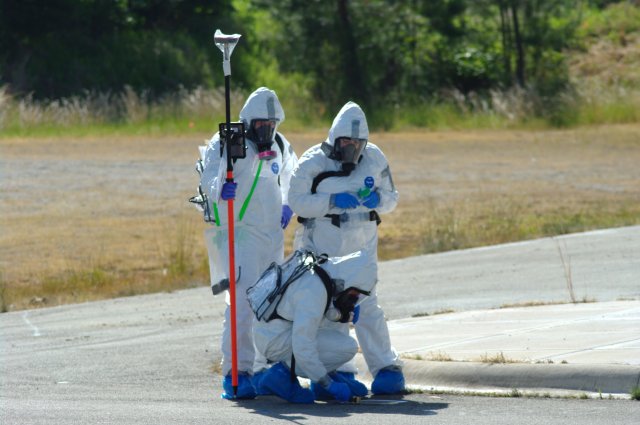
Project Leads
Project Leads
- Shannon Serre, EPA (Serre.Shannon@epa.gov)
- Lukas Oudejans, EPA (Oudejans.Lukas@epa.gov)
- Emile Benard, US Coast Guard
